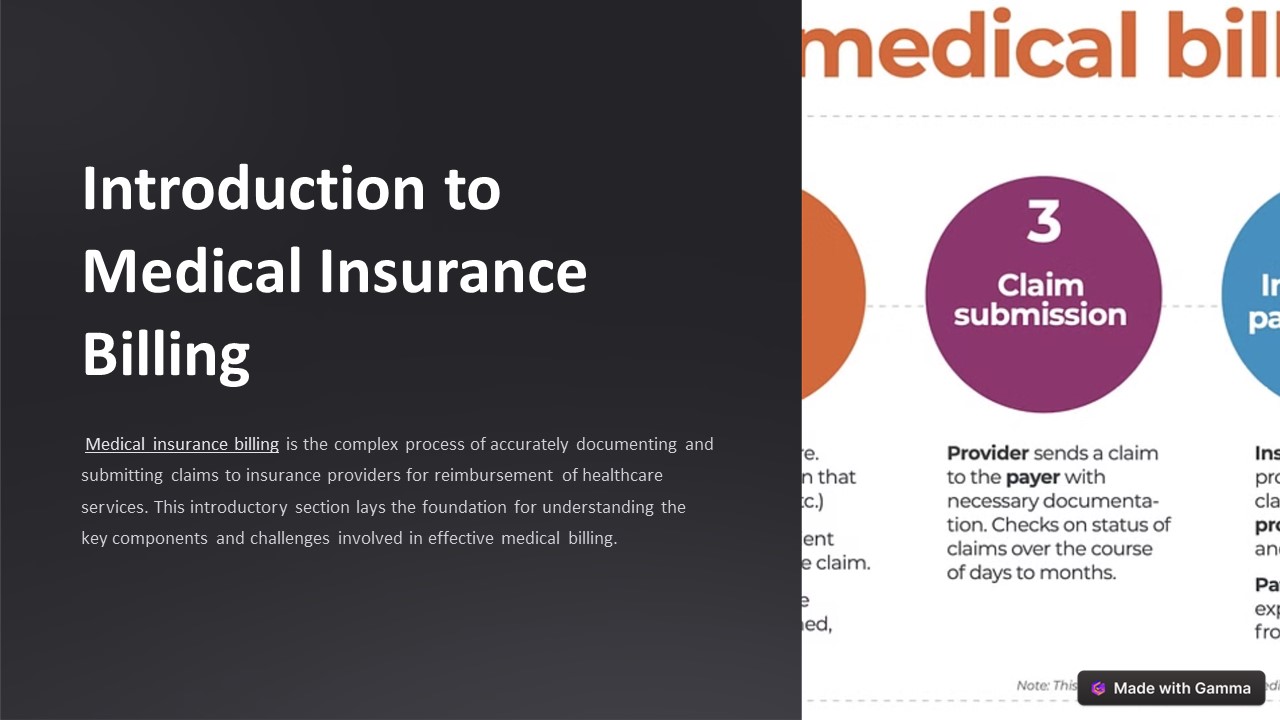Introduction-to-Medical-Insurance-Billing
Title:
Introduction-to-Medical-Insurance-Billing
Description:
Specialty medical billing company, nationwide, work with your software. Check how we can help optimize your practice! Visit- –
Number of Views:3
Title: Introduction-to-Medical-Insurance-Billing
1
Introduction to Medical Insurance Billing
Medical insurance billing is the complex process
of accurately documenting and submitting claims
to insurance providers for reimbursement of
healthcare services. This introductory section
lays the foundation for understanding the key
components and challenges involved in effective
medical billing.
2
Understanding the Medical Billing Process
Patient Registration
Coding and Documentation
Claim Submission
Gather vital patient information, including
insurance details, to properly identify the
patient and their coverage.
Submit the insurance claim with the appropriate
codes, modifiers, and supporting documentation to
the payer.
Accurately assign diagnosis and procedure codes
to reflect the services provided during the
patient visit.
3
Coding and Terminology
1
2
ICD-10 Codes
CPT Codes
Detailed diagnostic codes used to classify
diseases, conditions, and symptoms.
Standardized codes for medical procedures and
services performed by healthcare providers.
3
4
Modifiers
Medical Terminology
Codes that provide additional information about
the services rendered to ensure accurate
reimbursement.
Understanding common medical terminology is
crucial for accurate coding and documentation.
4
Claim Submission and Reimbursement
Claim Submission
Remittance Advice
Properly formatted claims are submitted to the
insurance payer, either electronically or via
paper forms.
The payer's response to the claim, detailing the
approved amount and any adjustments or denials.
Reimbursement
Patient Responsibility
The payment received from the insurance payer for
the covered services provided to the patient.
Any remaining balance the patient is responsible
for, such as deductibles, copays, or non-covered
services.
5
Compliance and Regulations
HIPAA
Ensures the privacy and security of patient
health information.
Fraud and Abuse
Prevents the misuse of healthcare resources
through proper billing practices.
Payer Policies
Adhering to the specific guidelines and
requirements of each insurance payer.
6
Managing Denials and Appeals
Research
Appeal
Follow-Up
Continuous Improvement
Thoroughly investigate the reason for the denial
and gather supporting documentation.
Promptly submit a written appeal to the insurance
payer, outlining the justification for the claim.
Persistently track the appeal process and respond
to any additional requests from the payer.
Use denial insights to enhance coding,
documentation, and submission processes.
7
Optimizing Revenue Cycle Management
Patient Registration
Ensure complete and accurate collection of
patient and insurance information.
Coding and Documentation
Maintain thorough and compliant medical records
to support claims.
Claim Submission
Submit clean claims with the appropriate codes,
modifiers, and supporting documentation.
Denial Management
Effectively appeal and resolve claim denials to
maximize reimbursement.































